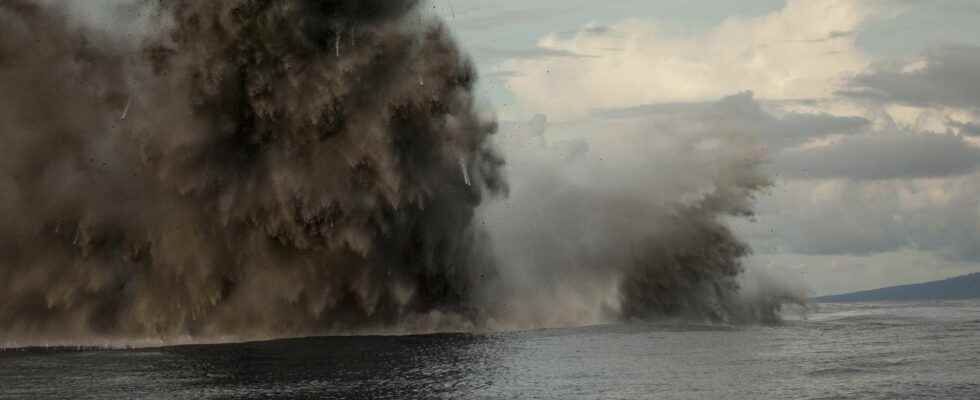A large volcanic eruption is currently taking place, under the waters of the Pacific. Satellite images reveal the presence of the Kavachi volcano, off the Solomon Islands.
You will also be interested
[EN VIDÉO] 8 things to know about volcanoes Objects of fascination and terror, volcanoes are among the most irreducibly indomitable forces of nature. From the mythological origin of their name to the eruptions that have marked history, here are 8 things to know about them.
Of the volcanic eruptions take place constantly and almost everywhere on our planet. If we generally talk about eruptions on the ground because of their visibility and their potential danger for humans, the ocean environment is also the site of significant volcanic activity.
Well out of sight, a large underwater eruption has been taking place since October 2021, off the solomon islands, located in the northeast of Australia. In question: the Kavachi volcano, which is known to be one of the most active underwater volcanoes in the Pacific.
Discovered in 1939, this volcano has several times given birth to small ephemeral islands, quickly eroded by the waves. Currently, the top of the volcano would be about 20 meters deep. Its base, meanwhile, rests on the ocean floor, at about 1,200 meters. Its intense volcanic activity is linked to the presence of a subduction zone, located 30 kilometers to the southwest.
A large plume of hot, acidic, sulfur-laden water
If on the surface nothing suggests that a volcanic activity has been underway for seven months, the satellite Landsat 9 reveals its existence thanks to these images taken from space. A large plume of colored water stretches clearly in the waters of the Solomon Sea, a few kilometers south of Vangunu Island. Previous research has shown that this plume is composed of very hot water and acidloaded with various particles of volcanic origin, but also with sulfur.
Given these conditions, one would expect that the surroundings of the Kavachi volcano would be deserted by ocean life. But it is nothing. In 2015, a scientific expedition revealed the presence of many sharks, including hammerhead sharks, having taken up residence in the crater of the volcano. The place is also occupied by many microbial colonies, which adapt perfectly to this sulfur-laden environment. These observations once again show the ability of marine ecosystems to adapt to extreme living conditions.
Do you want to access Futura without being interrupted by advertising?
Discover our online subscriptions and browse without ads! At this moment, the Mag Futura is offered for a 3-month subscription to the subscription “I participate in the life of Futura”!
What is Mag Futura?
- Our first paper journal of more than 200 pages to make science accessible to as many people as possible
- A dive into the heart of 4 scientific themes that will mark 2022, from the Earth to the Moon
*Mag Futura is sent after the third month of registration.
Interested in what you just read?

